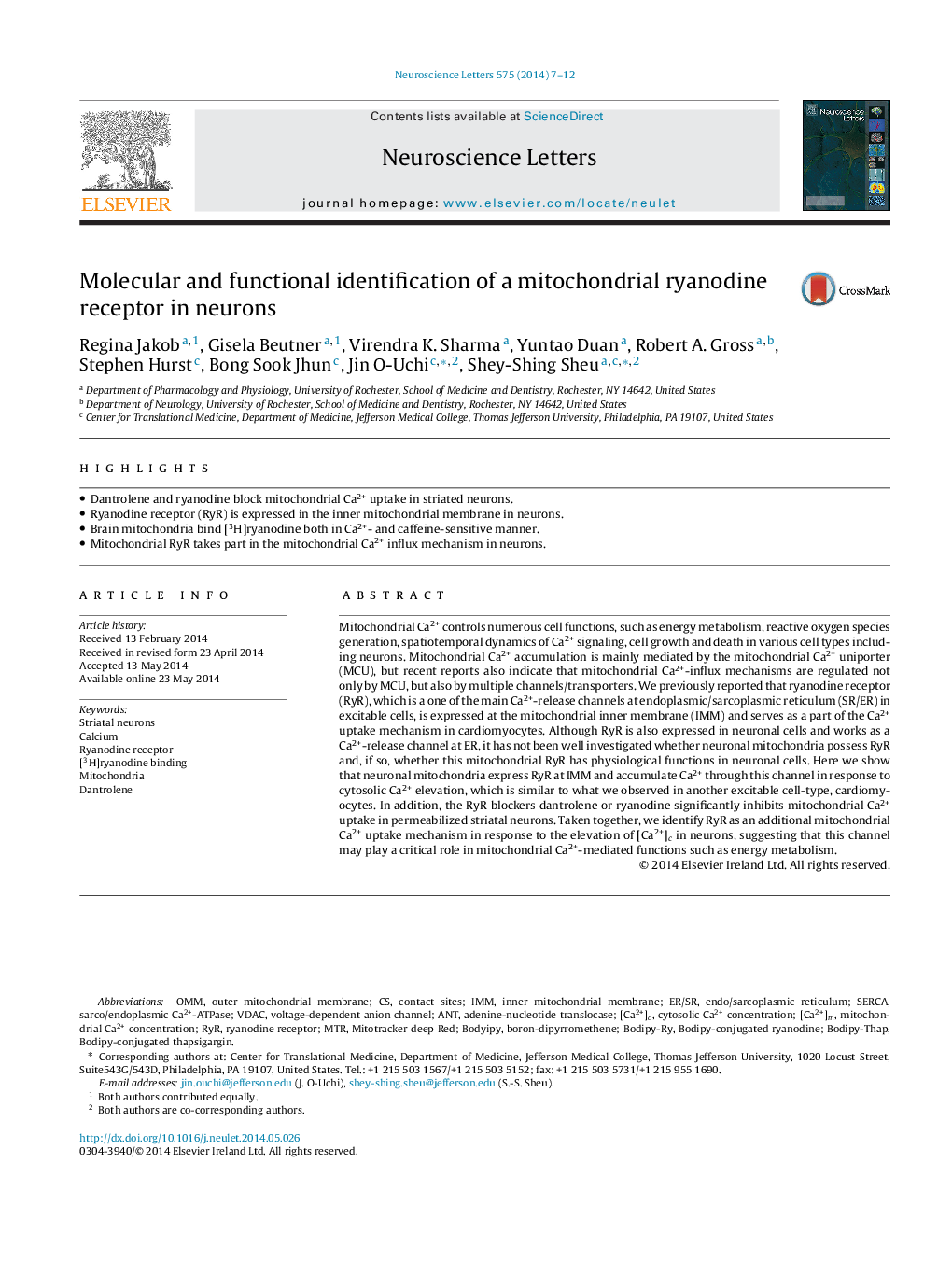| Article ID | Journal | Published Year | Pages | File Type |
|---|---|---|---|---|
| 4343716 | Neuroscience Letters | 2014 | 6 Pages |
•Dantrolene and ryanodine block mitochondrial Ca2+ uptake in striated neurons.•Ryanodine receptor (RyR) is expressed in the inner mitochondrial membrane in neurons.•Brain mitochondria bind [3H]ryanodine both in Ca2+- and caffeine-sensitive manner.•Mitochondrial RyR takes part in the mitochondrial Ca2+ influx mechanism in neurons.
Mitochondrial Ca2+ controls numerous cell functions, such as energy metabolism, reactive oxygen species generation, spatiotemporal dynamics of Ca2+ signaling, cell growth and death in various cell types including neurons. Mitochondrial Ca2+ accumulation is mainly mediated by the mitochondrial Ca2+ uniporter (MCU), but recent reports also indicate that mitochondrial Ca2+-influx mechanisms are regulated not only by MCU, but also by multiple channels/transporters. We previously reported that ryanodine receptor (RyR), which is a one of the main Ca2+-release channels at endoplasmic/sarcoplasmic reticulum (SR/ER) in excitable cells, is expressed at the mitochondrial inner membrane (IMM) and serves as a part of the Ca2+ uptake mechanism in cardiomyocytes. Although RyR is also expressed in neuronal cells and works as a Ca2+-release channel at ER, it has not been well investigated whether neuronal mitochondria possess RyR and, if so, whether this mitochondrial RyR has physiological functions in neuronal cells. Here we show that neuronal mitochondria express RyR at IMM and accumulate Ca2+ through this channel in response to cytosolic Ca2+ elevation, which is similar to what we observed in another excitable cell-type, cardiomyocytes. In addition, the RyR blockers dantrolene or ryanodine significantly inhibits mitochondrial Ca2+ uptake in permeabilized striatal neurons. Taken together, we identify RyR as an additional mitochondrial Ca2+ uptake mechanism in response to the elevation of [Ca2+]c in neurons, suggesting that this channel may play a critical role in mitochondrial Ca2+-mediated functions such as energy metabolism.
